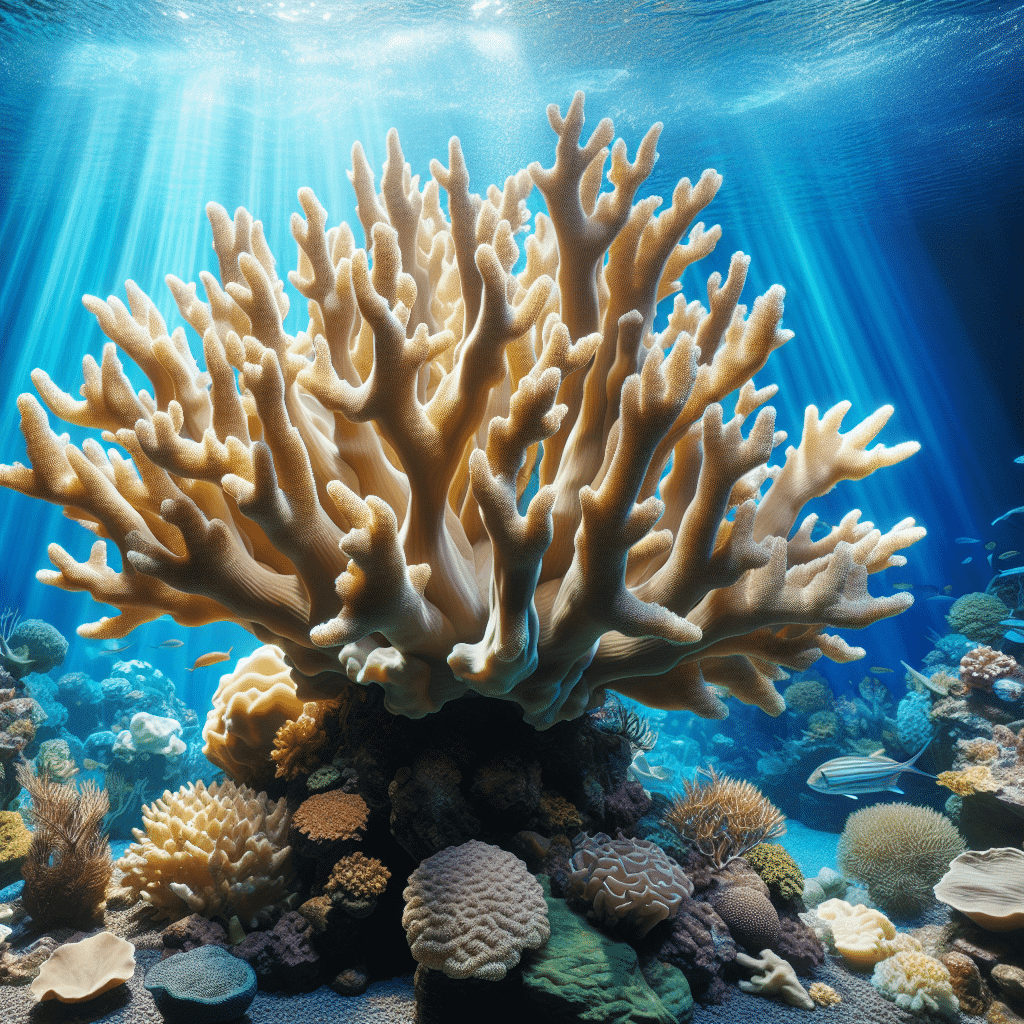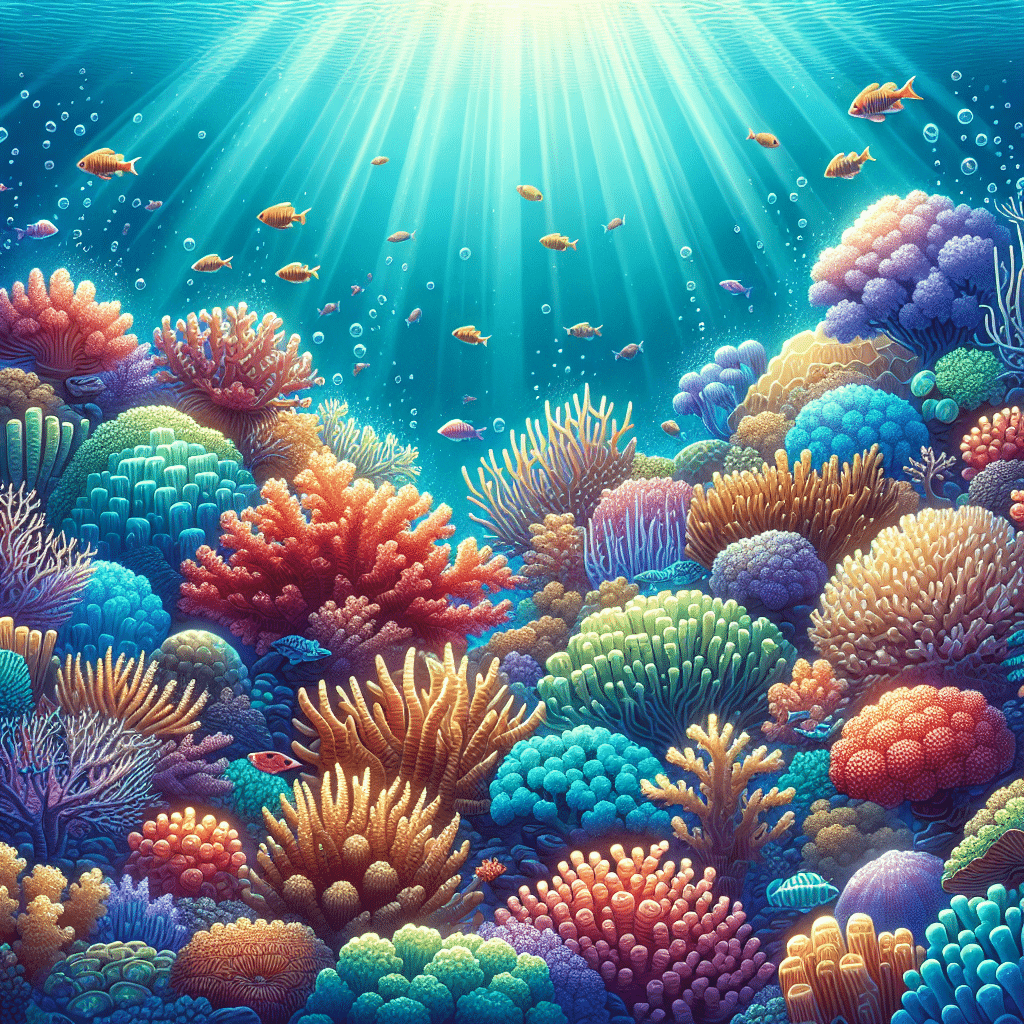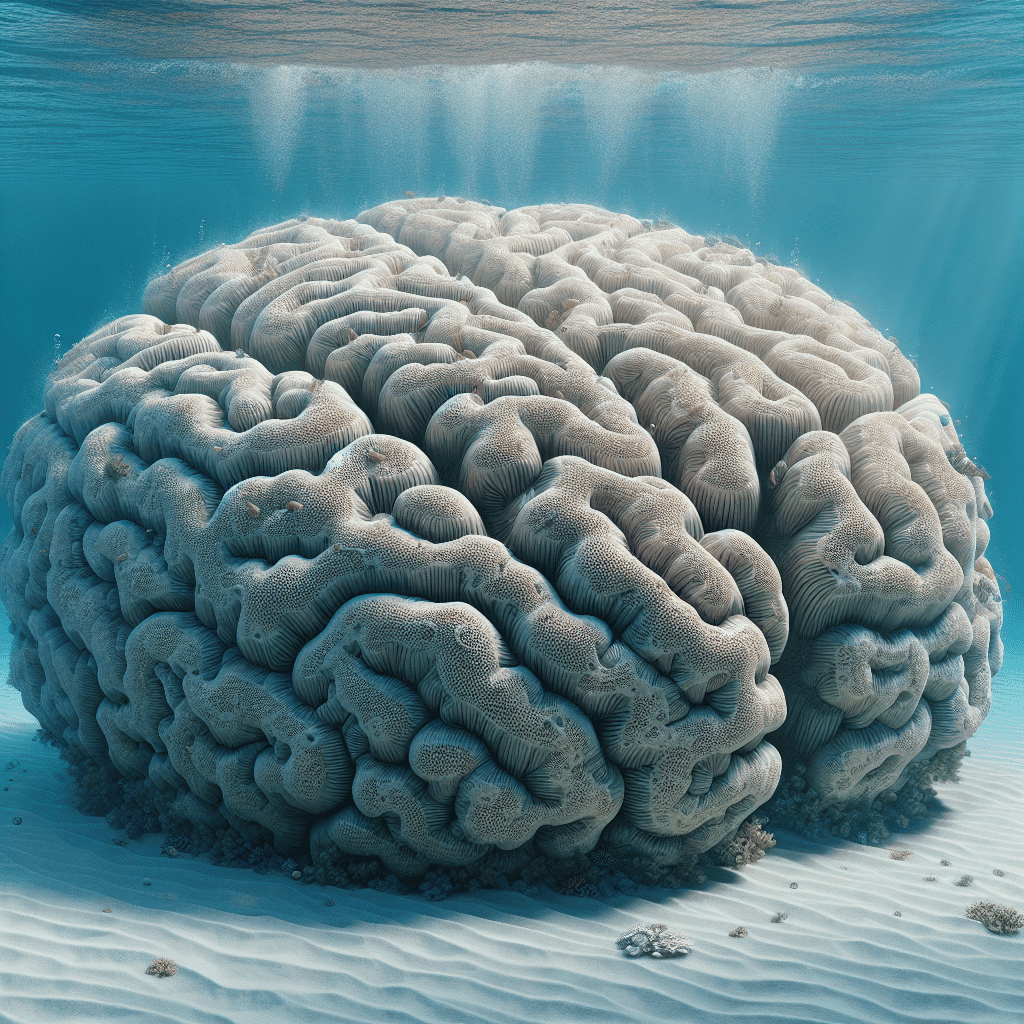Understanding Elkhorn Coral
Importance of Elkhorn Coral
Elkhorn coral is a vital species in the Caribbean ecosystem, contributing to the structure and health of coral reefs for over 5,000 years. Along with staghorn coral and star corals, it plays a significant role in building these reefs. Elkhorn coral can form dense groups known as “thickets” in shallow waters, creating essential habitats for various reef inhabitants, especially fish. These thickets not only provide shelter but also serve as breeding areas for marine life, making them crucial for biodiversity in reef systems.
Decline of Elkhorn Coral
Unfortunately, elkhorn coral populations have seen a dramatic decline, dropping by 97 percent since the 1980s primarily due to a severe outbreak of white band disease. This has led to their current population being less than 3 percent of what it once was (NOAA Fisheries). While some regions, like the U.S. Virgin Islands, have stable populations, others, such as the Florida Keys, continue to experience decreases. The challenges of successful reproduction further complicate recovery efforts, making it rare for new colonies to form.
Here’s a brief overview of the current status of elkhorn coral populations:
| Time Period | Population Status |
|---|---|
| 1980s | 100% (baseline) |
| Present | Less than 3% of original population |
This decline is a stark reminder of the fragility of coral ecosystems, and it underscores the need for dedicated conservation efforts. If you’re looking to learn more about other types of corals that might be suitable for your reef tank, check out information on staghorn coral or brain coral.
Threats to Elkhorn Coral
Elkhorn coral faces a multitude of threats that jeopardize its survival and the health of the marine ecosystems it supports. Two of the most pressing issues are Stony Coral Tissue Loss Disease and the impact of rising ocean temperatures.
Stony Coral Tissue Loss Disease
Stony Coral Tissue Loss Disease (SCTLD) is a highly lethal disease that first emerged in the Florida Keys in 2014. It has since spread rapidly throughout the Caribbean, posing a significant threat to elkhorn coral and other coral species. SCTLD can cause extensive tissue loss, leading to the eventual death of affected corals. The rapid spread of this disease has made it one of the most concerning coral diseases recorded, as it affects multiple species and can devastate entire reefs.
| Year Identified | Location | Disease Impact |
|---|---|---|
| 2014 | Florida Keys | Rapid spread through Caribbean, high mortality |
Impact of Rising Ocean Temperatures
Rising ocean temperatures are perhaps the most significant threat to elkhorn coral. Global warming has led to increased water temperatures, which stress corals and cause them to expel the colorful algae they depend on for energy and growth. This process, known as coral bleaching, can severely compromise the health and survival of coral colonies (Endangered.org).
Mass bleaching events have become more frequent and severe, with scientists warning that most of the world’s corals could face deadly bleaching within the next 20 years if current emissions continue. A mere 2 degrees Fahrenheit increase in water temperature can trigger bleaching, making elkhorn coral particularly vulnerable (World Wildlife Fund).
Furthermore, ocean acidification, a result of increased carbon dioxide absorption, hinders corals’ ability to build their protective skeletons, which is essential for their survival. If carbon dioxide pollution is not curtailed rapidly, many coral reefs, including those supporting elkhorn coral, could vanish by mid-century (Endangered.org).
| Threat | Description |
|---|---|
| Ocean Warming | Increased temperatures lead to bleaching and loss of algae |
| Ocean Acidification | Impairs coral skeleton building and survival |
Understanding these threats is crucial for anyone interested in the care and conservation of elkhorn coral in reef tanks. Keeping water temperatures stable and ensuring a healthy environment can help mitigate some of these threats. If you’re looking for more information on corals, feel free to explore other types like staghorn coral or hammer coral.
Conservation Efforts
Restoration and Survival Rates
When it comes to restoring elkhorn coral, recent studies have shown promising results. The first successful outplanting and long-term survival of Acropora palmata settlers, which were reared from field-collected gametes, was reported. After 2.5 years, the survival rate of these outplanted settlers—those put back into the ocean shortly after settlement—was an impressive 3.4%. This rate is 6.8 times higher than that of settlers kept in land-based nurseries, which suggests that quicker outplanting can significantly boost survival rates.
The financial aspect is also noteworthy. By outplanting settlers shortly after they settle, the cost of producing a single 2.5-year-old elkhorn coral individual dropped dramatically from $325 to just $13 USD. This approach is way more cost-effective compared to traditional nursery rearing, making it a viable option for restoring coral populations.
| Method | Cost to Produce One 2.5-Year-Old Individual |
|---|---|
| Traditional Nursery Rearing | $325 |
| Outplanting Shortly After Settlement | $13 |
Legal Protection and Critical Habitat
Elkhorn coral received significant legal protection under the Endangered Species Act in 2006 due to its vulnerability to global warming. In 2008, NOAA Fisheries took further action by prohibiting all activities that could harm these corals or their habitats. This level of protection is crucial for the survival of elkhorn coral and its ecosystem.
In 2012, there was a proposal to upgrade the coral’s status from “threatened” to “endangered,” which would strengthen conservation efforts. Thanks to a lawsuit filed by the Center for Biological Diversity, almost 3,000 square miles of protected critical habitat were established for elkhorn and staghorn corals (Center for Biological Diversity). This legal framework not only aids in coral reef conservation but also requires industries that emit greenhouse gases to address their impacts on these vulnerable coral species.
The combination of restoration efforts, legal protections, and critical habitat designations creates a multifaceted approach to ensuring the survival of elkhorn coral. As a hobbyist, understanding these conservation efforts can deepen your appreciation for these beautiful corals and their role in the marine ecosystem. If you’re looking to enhance your reef tank, consider exploring various types of corals that can thrive in a protected environment.
Characteristics of Elkhorn Coral
Elkhorn coral is an essential species for reef ecosystems, and understanding its characteristics can help me care for and appreciate these beautiful corals in my reef tank.
Growth Rate and Size
Elkhorn coral is relatively fast-growing, with branch lengths increasing about 2 to 4 inches per year. It takes about 10 to 12 years to reach its maximum size, typically around 6 feet in height and 12 feet in diameter. Each colony is made up of many individual polyps that grow together, and coral age can be determined by counting growth rings, similar to tree rings.
| Growth Rate | Maximum Size | Age to Maturity |
|---|---|---|
| 2-4 inches/year | Up to 6 feet high, 12 feet wide | 10-12 years |
Elkhorn coral colonies are usually golden tan or pale brown with white tips and can thrive in water depths of less than 20 feet, although they can be found down to about 65 feet. When healthy, these corals can grow up to 5 inches in branch length each year (National Park Service, Animal Diversity Web).
Reproduction Methods
Elkhorn coral is a simultaneous hermaphrodite, which means it has both male and female reproductive organs. It reaches reproductive maturity at about 2 square feet. This coral reproduces once a year through a process called broadcast spawning, where it releases eggs and sperm into the water column.
Additionally, Elkhorn coral can form new colonies from broken pieces that re-attach to hard surfaces, making it resilient in some ways. This ability to regenerate is crucial for its survival, especially in environments where physical damage can occur.
| Reproductive Method | Maturity Size | Frequency |
|---|---|---|
| Broadcast spawning | 2 square feet | Once per year |
For a thriving reef tank, understanding the growth and reproduction of Elkhorn coral will help me create the best environment for these corals, ensuring they flourish and contribute to the vibrant marine ecosystem. If you’re interested in other types of corals, check out our sections on brain coral, staghorn coral, and torch coral.
Coral Bleaching and Impact
Causes of Coral Bleaching
Coral bleaching is a significant issue that affects the health of coral reefs, including elkhorn coral. The primary cause of this phenomenon is climate change, which leads to rising ocean temperatures. Even a minor increase in water temperature, as little as 2 degrees Fahrenheit, can trigger corals to expel the algae living within them, resulting in bleaching (World Wildlife Fund).
In a concerning trend, between 2014 and 2017, around 75% of the world’s tropical coral reefs experienced heat stress severe enough to cause bleaching, with 30% facing such extreme conditions that it led to coral death. This situation poses a dire threat to coral health and reef ecosystems.
Effects on Marine Ecosystems
The impact of coral bleaching extends far beyond the corals themselves. Healthy coral reefs serve as vital habitats for thousands of marine animals, including fish, sea turtles, crabs, and jellyfish. These ecosystems provide shelter, spawning grounds, and protection from predators. When corals bleach, the loss of habitat can lead to a decline in marine biodiversity, ultimately threatening the entire ocean food chain (World Wildlife Fund).
Additionally, bleached reefs are devoid of marine life, which can threaten the livelihoods of communities that depend on reef tourism. The coral reefs support billions of dollars in tourism revenue and thousands of jobs. Without healthy coral ecosystems, reliance on expensive and less effective manmade seawalls becomes necessary, compromising coastal safety and food security (World Wildlife Fund).
In summary, the health of elkhorn coral and other coral species is integral to the overall health of marine ecosystems and human communities. Understanding the causes and effects of coral bleaching is crucial for anyone interested in maintaining healthy reef tanks and supporting coral conservation efforts.
Vulnerabilities and Threats
Ocean Warming and Acidification
I can’t stress enough how much ocean warming and acidification threaten elkhorn coral. Rising ocean temperatures caused by global warming are the single greatest threat to these corals and coral reefs worldwide. When corals get stressed from warm water, they expel the colorful algae they rely on for energy and growth. This process leads to bleaching and often results in death.
Mass bleaching events are happening more frequently due to these rising temperatures. Scientists predict that most of the world’s corals will face deadly bleaching within 20 years if we don’t change our emission habits. On top of that, ocean acidification—caused by the absorption of carbon dioxide—impairs corals’ ability to build their protective skeletons. If we don’t quickly reduce carbon dioxide pollution, we might see the disappearance of most coral reefs by mid-century (Endangered.org).
Here’s a quick look at the impacts of temperature changes:
| Temperature Change (°F) | Effect on Coral |
|---|---|
| +1 | Stress begins, potential bleaching |
| +2 | High risk of bleaching |
| +3 | Likely death of coral if conditions persist |
Human-Induced Stressors
Elkhorn coral faces several human-induced stressors that compound the effects of climate change. Unsustainable fishing practices, land-based sources of pollution, and coastal development significantly impact coral health. These activities can lead to increased sedimentation, nutrient loading, and physical damage to the reefs. All of these factors contribute to coral bleaching, disease outbreaks, and reduced reproductive success, making it harder for elkhorn coral populations to recover (NOAA Fisheries).
It’s frustrating to see that even regulatory efforts have loopholes that disregard the serious threats posed by global warming and ocean acidification. The Fisheries Service has come under scrutiny for this, leading to calls for further legal action to address these critical issues.
Protecting elkhorn coral means understanding and mitigating these human-induced stressors, as well as pushing for policies that truly protect these beautiful corals. For more information on different types of corals, check out the various articles on corals and specific types like brain coral and mushroom coral.
Habitat and Distribution
Preferred Environment
I’ve learned that elkhorn coral thrives in clear, shallow waters, typically ranging from 1 to 15 feet deep. These corals are often found in high-energy zones on coral reefs, which can experience significant wave action. While this wave action can sometimes lead to breakage, it also plays a vital role in their reproduction through fragmentation. Elkhorn coral typically prefers temperatures between 66°F and 86°F and salinities of 33 to 37 parts per thousand. They commonly establish themselves in areas with heavy surf close to shore, making them unique compared to other coral species.
| Environmental Factor | Ideal Range |
|---|---|
| Depth | 1 – 15 feet (0.3 – 4.5 meters) |
| Temperature | 66 – 86°F (19 – 30°C) |
| Salinity | 33 – 37 parts per thousand |
Geographic Range
Elkhorn coral can be found in coral reefs from southern Florida down to the northern coasts of Venezuela. Their native populations are primarily located in the Bahamas and throughout the Caribbean. NOAA Fisheries has even designated critical habitat areas off the coast of Florida and the islands of Puerto Rico and the U.S. Virgin Islands to help protect these corals. The overall geographical range of elkhorn coral is important for hobbyists to understand, especially when setting up a reef tank environment that mimics their natural habitat.
To sum it up, if you’re planning to include elkhorn coral in your reef tank, aim to replicate their natural shallow, warm, and surf-rich environment to help them thrive. For more information on other types of corals, check out our articles on brain coral, mushroom coral, and staghorn coral.
Recovery Challenges
Disease Outbreaks and Population Decline
I’ve noticed that elkhorn coral populations have faced severe declines since the 1980s, primarily due to disease outbreaks. One of the most devastating was the emergence of white pox disease, first documented in 1996 near Key West, which led to an alarming 82% decrease in the elkhorn coral population within just four years. This disease is caused by a bacterium called Serratia marcescens, which is typically found in human intestines rather than healthy reefs. The increase in human populations along tropical coasts has led to more human waste entering coastal waters, contributing to the spread of various coral diseases.
Here’s a quick overview of the main threats to elkhorn coral populations:
| Threats | Details |
|---|---|
| White Pox Disease | Bacterial infection causing significant mortality. |
| Hurricanes | Physical damage that can severely impact coral structures. |
| Elevated Temperatures | Contributes to stress and susceptibility to disease. |
| Bleaching | Loss of symbiotic algae, leading to coral stress and mortality. |
| Sedimentation | Can smother corals and reduce light availability. |
Recovery from these diseases is particularly challenging, unlike recovery from physical disturbances like hurricanes, which can be relatively rapid through asexual fragmentation. The ongoing research aims to uncover why certain bacteria attack corals and how various factors, such as water temperature, exacerbate these diseases.
Reproductive Success and Conservation Efforts
Conservation efforts have been ramped up to help elkhorn coral recover from these devastating declines. In 2006, elkhorn and staghorn corals were granted federal legal protection under the Endangered Species Act due to their vulnerability to global warming. This was a significant step forward, but the journey remains complicated.
In 2008, NOAA Fisheries established rules prohibiting activities that could harm elkhorn corals or their habitat. They also identified nearly 3,000 square miles of critical habitat for these corals as a result of legal actions taken by the Center for Biological Diversity. Despite these protections, challenges remain, particularly because the Fisheries Service included a loophole in its critical habitat rule that overlooked threats from global warming and ocean acidification. This has prompted preparations for further legal actions to address these concerns.
It’s also important to note that while elkhorn corals can recover from some physical damage quickly, their reproductive success is crucial for long-term population recovery. The combination of legal protections and habitat restoration efforts is essential for improving the reproductive success rates of elkhorn corals in the wild.
For more information on other types of corals that might be of interest, check out the following links: brain coral, staghorn coral, and torch coral.



